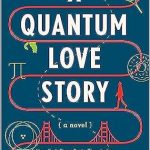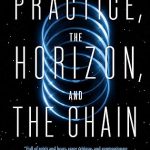 Centurion (Galactic Gladiators: House Of Rone #3) by Anna Hackett
Centurion (Galactic Gladiators: House Of Rone #3) by Anna Hackett Format: eARC
Source: author
Formats available: paperback, ebook
Genres: science fiction romance
Series: Galactic Gladiators: House of Rone #3
Published by Anna Hackett on October 20th 2019
Purchasing Info: Author's Website, Amazon
Goodreads
Rescued from her alien captors, the only person who makes her feel safe is a cold, emotionless cyborg.
Abducted from her exploration ship, paramedic Sage McAlister has spent months locked in cells and labs belonging to the Edull. Rescued by the cool, powerful cyborgs of the House of Rone, she finds herself among fellow human survivors on the desert world of Carthago. But despite being free, Sage feels cold inside and is struggling to cope. The only person she feels safe with—who she doesn’t feel the need to pretend with—is a deadly cyborg who feels nothing.
Forced into a military cyborg program as a teen, all Acton Vonn remembers of his past are violent missions and the cybernetic enhancements forced on him before he broke free. His emotions have been dampened to nothing for decades and he’s fine with that. It makes him an efficient member of the House of Rone. Yet the more time he spends with the copper-haired woman he helped rescue from the Edull, the more unfamiliar, strange, and perplexing things he starts to feel.
When a tip reveals that more humans are being held captive at a mysterious desert lake, Sage will stop at nothing to help rescue her crewmates. As she is drawn closer to Acton, she worries about risking her heart. Being with Sage breaks down barriers inside Acton and he struggles with the emotions he doesn’t want to feel. But deep in Carthago’s dangerous deserts, with the Edull hunting them, Sage and Acton will have to risk it all: their lives, their hearts, their souls.
My Review:
I read Centurion in bits and pieces, which was kind of surprising for a book that checks in at just under 250 pages and is written by an author I love in a series that I have enjoyed very much.
Nevertheless, I picked it up and liked what I read but just didn’t feel compelled to finish. But I had a relatively short airplane ride and no internet and there you go, book done.
Which leads me to write about why I didn’t feel compelled, why I finished it anyway, what I liked and what didn’t quite grab me.
So here we are.
The House of Rone series is a sequel series to the author’s Galactic Gladiators series, which I loved and didn’t really want to see end. So I was really glad when it didn’t.
The premise for the whole thing is that a temporary wormhole opened up between our solar system, specifically near Jupiter Station which sets this story in a future that is not-too-distant, and the very far distant indeed other end of the galaxy in the vicinity of a planet called Carthago.
(Carthago is a play on Carthage, and all resemblances to anything vaguely reminiscent of what we think of as the “blood and sandals” school of Greco-Roman history definitely apply. Only with lots of futuristic tech built in.)
And, in true SF fashion, that wormhole was exploited by the scum of this and every other galaxy – slave traders. Said scum scoop up everyone they can before the wormhole closes. So far, we know they grabbed everyone they could from both Jupiter Station and at least one ship in the area before they hightailed it back home.
 The stories in both the Galactic Gladiators series and the House of Rone spin-off revolve around the rescue, one by one, of all of the Terran refugees, who then manage to make new lives for themselves by falling in love, usually with one of the gladiators from the Kor Magna Arena – hence the original series title.
The stories in both the Galactic Gladiators series and the House of Rone spin-off revolve around the rescue, one by one, of all of the Terran refugees, who then manage to make new lives for themselves by falling in love, usually with one of the gladiators from the Kor Magna Arena – hence the original series title.
While patterns did emerge during the first series, there were plenty of variations on the theme. Including one where the refugee was male and the gladiator was female – and there need to be a few more like that. The refugees all had, found or adopted a variety of professions upon their recovery. And not all of the locals were completely human, nor were all of the locals gladiators – although one was a cyborg, the Imperator of the House of Rone. They all came into the story with slightly different origin stories and original traumas.
So there was an overall pattern but plenty of variation within that pattern.
The difference so far within the House of Rone series is that all of those local heroes (and so far it’s all been heroes) are all cyborgs – because that is what the House of Rone specializes in. And so far, all of them are coming from a very similar headspace – that they are too much machine to make enough emotional connections to fall in love – and that most of them were, until the advent of those Terran refugees, happy (well, content, anyway, because these guys didn’t actually DO happy) to remain that way.
The women have come from different emotional places. Sage, the heroine of Centurion, was interesting because before and during her captivity she projected an air of total optimism. She was everyone’s ray of sunshine. Now that she’s free, she feels frozen. She’s having problems accessing her own emotions, but feels the need to fake it for the other women from Earth. She initially becomes friends with the cyborg Acton because he doesn’t show or seemingly have emotion and she doesn’t have to pretend for him.
The way that Sage comes back to life, and back to herself, felt genuine, where Acton’s emotional flowering felt contrived and much too quick.
To put it another way, I liked her but didn’t warm up to him – even as he warmed up.
I’m also having a more difficult time with the villains of this series, the Edull, than I did with the Thraxian slavers – and doesn’t THAT sound wrong.
But the Thraxians, as awful as they were, were just mercenaries. I don’t agree with their actions, but their motivation is pretty simple. They’re in it for the money. As long as they have buyers, they’ll be selling.
On my other hand – probably a cyborg one at that – the Edull don’t make a lot of sense, or at least not yet.
They are tinkers. They take scrap metal and parts and (rather ingeniously) turn them into robots. At first they were just using slaves, including the human slaves, to perform backbreaking labor. Which was awful and terrible enough. Now they’re using the slaves for parts for the robots. They’ve slipped from being horrible to being extra-super-crazy evil. There is a mercenary element to this, of course. They do sell the robots. But it seems like there’s more and I’m not getting it.
And it may just be that we haven’t had a chance to see into their heads yet – as disgusting as that’s likely to be. But for a villain – particularly an entire villainous race – the reader needs to understand why they’re villainous – not just that they ARE villainous. In the author’s Hell Squad series we’re not supposed to like the evil Gizzida, but we do KNOW why they do what they do. In its way, it makes them even more frightening.
I’m just not there yet for the Edull. They feel like they are getting more evil for evil’s sake, and it’s not enough.
Escape Rating B: As I said, I liked Sage a lot. I’m still enjoying the setting and setup of this series, and will definitely continue to follow it. But it’s starting to need something more for me to really love it. Hopefully next time we’re back on Carthago I’ll get some of my answers.



























Love this author. Thank’s for introducing her to me.
Angela (Angel’s Guilty Pleasures) recently posted..It’s Release Day! Blood Night (1001 Dark Nights)(Krewe of Hunters) by Heather Graham